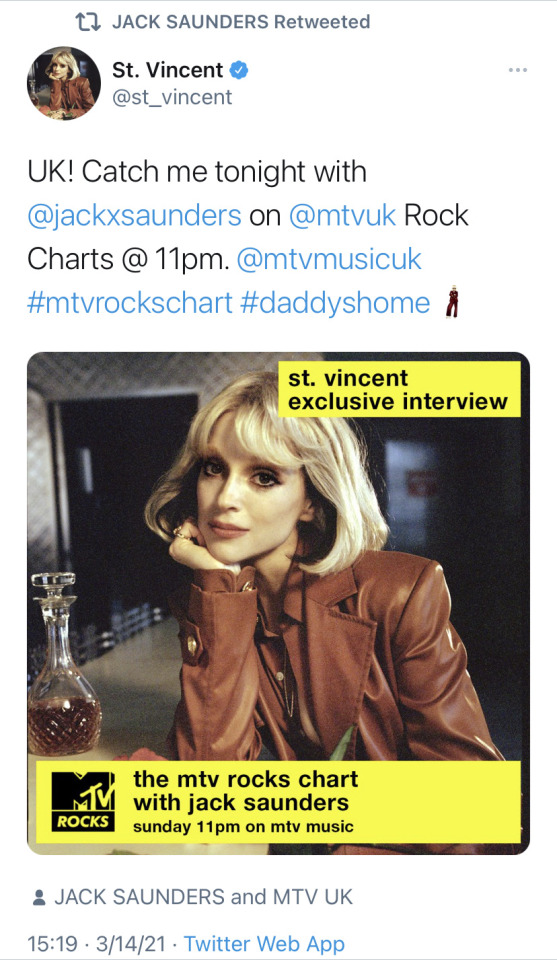Text
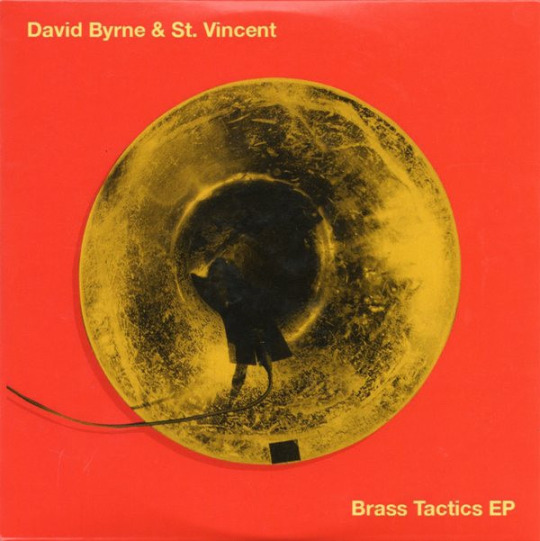
It’s all about Cissus song
5 notes
·
View notes
Text
youtube
St. Vincent - Finding New Sounds in a Golden Era
[Guitar Center interview here]
25 notes
·
View notes
Text




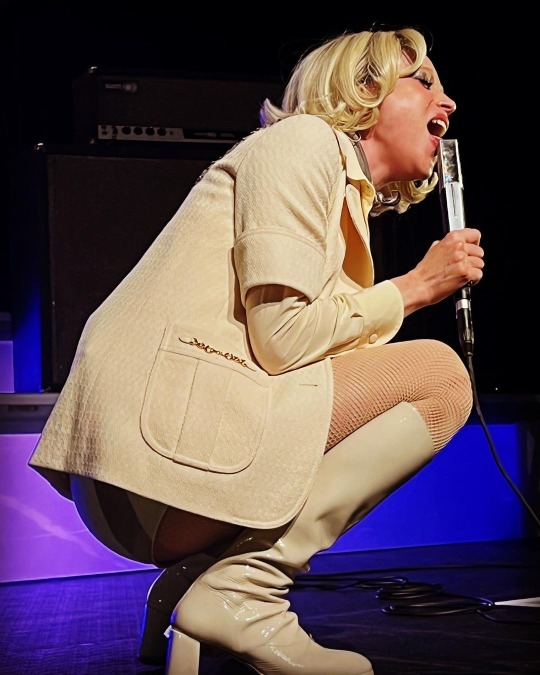

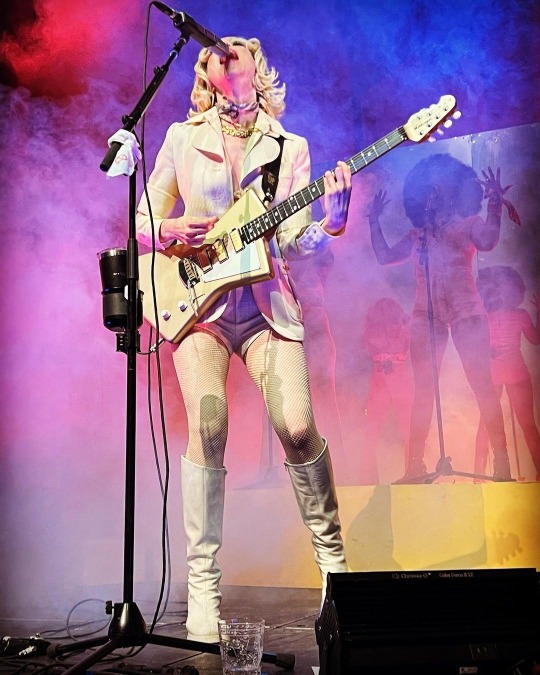


St. Vincent
Austin, TX. 1 October 2021.
By daninatx
104 notes
·
View notes
Video
vimeo
The Art of Drive - St. Vincent
‘The Art of Drive’ has launched as an innovative global content collaboration designed to educate and inspire the next generation of creators with boundary-pushing ideas and storytelling.
The launch film, directed by award-winning filmmaker Nina Meredith and featuring St. Vincent, aka Annie Clark, provides audiences with a rare glimpse into the artist’s trailblazing sound and vision which has redefined the cultural landscape. The documentary highlights the power of authenticity and fearlessness to break barriers and make the impossible possible.
12 notes
·
View notes
Text
NY TIMES: St. Vincent Is Trying to Understand People
As she releases her sixth album, “Daddy’s Home,” the musician expounds on the lengthy documentaries, Janet Jackson bust and Joni Mitchell album that feed her creativity.

By Olivia Horn
May 4, 2021, 10:00 a.m. ET
Despite the hardships of the past year, Annie Clark’s sixth studio album came together with remarkable ease. “Maybe I earned a fun one,” Clark, who records under the name St. Vincent, mused. “Usually there’s some kind of ‘Dark Night of the Soul’ moment. And there just wasn’t.”
Clark, 38, spent much of 2020 shuttling between her home in Los Angeles and her family’s in Texas. But the record (“Daddy’s Home,” due May 14) was born at Electric Lady Studios in Manhattan, where she and her repeat collaborator Jack Antonoff landed on 1970s New York as their lodestar. The resulting songs ease away from the angular art-pop of “Masseduction” from 2017, opting for gentler, slouchier rock. The relative softness corresponds to Clark’s effort to treat the troubled, complicated characters that populate her record with care. Among them are the broke and lovelorn protagonist of the lead single “Pay Your Way in Pain,” Nina Simone, Marilyn Monroe and her own father, whose release from prison in 2019 inspired the title track.
Clark confessed that she did not meet her quarantine goals of learning conversational Italian or writing a tour bus cookbook, but she did read some books about the gulag. Calling from her “utilitarian” Los Angeles studio, she detailed 10 of her favorite things to watch, read and hear — many of her picks reflecting a fascination with history and an eagerness to unpack social and aesthetic violence. These are edited excerpts from the conversation.
1. William Scott Sculptures
I discovered William Scott’s work through David Byrne, at his place in New York. And when we were on tour with “Love This Giant,” we went to Creative Growth in Oakland [a nonprofit that supports artists with disabilities]. I had my eye on this bust of Janet Jackson. And then when I was back, I went and bought a bust of CeCe Winans. So I have these busts in my library.
A lot of the artists whose work I collect are people who are marginalized from society in one way or another. What I like about it is that the expression feels very pure. These are people who might not have all of the tools at their disposal or the education, or any of that, but they are compelled to make work. That kind of irrepressible urge in people — that I just find so inspiring and heartening and cool. And it’s completely divorced from any of the status of the quote, unquote, “art world.”
2. Adam Curtis’s Documentary Series “Century of the Self”
The way his work has been described is as emotional history or impressionistic history. The lines that he draws between events and trends are not exactly “A plus B equals C,” but the general thesis is like, “the collective consciousness is saying this.” As a writer, I’m always trying to understand systems and understand people.
3. Ric Burns’s “New York: A Documentary Film”
I used to live in a rent-controlled place in the East Village. But it was shady how I lived there, so I was never able to get utilities in my name. I lived there for 10 years and I didn’t have the internet, so I had DVDs. I used to go to Kim’s Video all the time and buy DVDs so when I would wake up hung over and be like, “Oh, just can’t quite make it out of bed today,” I would have something to put on. If I wanted to watch something it wasn’t like “Netflix and chill.” I associate that Ric Burns documentary with being either hung over or tired or both, and watching it in my bed.
4. Joni Mitchell’s “Hejira”
This is one of those Joni Mitchell records that I didn’t hear until I was in my early 20s. Everybody knows “Blue” and “Ladies of the Canyon,” but this is when I became a Joni Mitchell fan, with a capital F. This record’s just so deep. Her lyrics are … Cubist. I’m thinking of the one where she’s like, “In the mirrors of a modern bank/From the window of a hotel room.” And it’s all wiggles, you know? It’s like water, that record. And I don’t mean to make it about me, but I feel like I can understand some of the things that Joni talks about, like the refuge of the road, or watching the world from an airplane or being in a hotel room.
5. Maggie Nelson’s “The Art of Cruelty”
This is one of those books that I picked up six times and would get through a few pages and be like, “This is really brilliant,” but it felt impenetrable at first. Then I had this one weekend where the clouds parted, and I just could see it and plowed through it. It talks about the ethics of being an artist in a way that is so brilliant, and so not orthodox or finger wagging. I think it’s one of those books you can revisit at various points of your life.
6. Her Own STV Signature Series Guitar
Part of it was inspired by Klaus Nomi’s tuxedo. And I wanted it to hit my sternum in a particular way. I am cis female, so the way that it hits the sternum and then has a little bit of a cutaway, it makes room for my breast. But just one of them. There’s only room for one! I love it. It’s the only electric that I play, with very rare exception.
I saw people’s pictures of it from the Met [in the exhibition “Play It Loud: Instruments of Rock & Roll”], because I never got a chance to go and see it in real life. Most of the time, I just kind of like quietly put my head down and work — and then every once in a while, I look up and see something that I’ve made, and it’s mysterious that it’s in the world.
7. Wim Wenders’s “Pina”
I love Pina Bausch’s work. I was really inspired by “The Rite of Spring,” where the virgin dances herself to death. There’s this one particular movement that was like, drawing your hand above your head, and then when you pull it down, your elbow goes into your stomach — sort of like you’re open and then you’re impaling yourself. It just moved me to tears. So when I worked with my friend Annie-B Parson to choreograph the Digital Witness Tour, I was like, “Can we please incorporate this?” Another big thing: I was obsessed with falling. That was another big part of the Bausch work. How do you fall and make it look violent but not hurt yourself? I’d get a rehearsal room with Annie-B and just practice falling.
8. Vintage RCA 77-D Microphone
It’s an old ribbon mic, and it just sounds so good and warm. I know these are words that might not mean that much — when people describe sound as warm, it’s reductive. But it makes things sound and feel true. I don’t mean that it has perfect fidelity. What I mean is that when you sing into this microphone, what comes back at you feels honest. My friend Cian Riordan, who mixed “Daddy’s Home,” hipped me to this mic.
9. “Hidden Brain” Podcast
There was one recently about the idea of honor culture. You know, if someone is insulting someone’s masculinity and masculinity is tied up with honor, you have to avenge that insult. A lot of these “honor societies” end up with more violence because you have to save face and there’s less ways to assimilate conflict. The premise of so much of “Hidden Brain” is that we live by the stories we tell ourselves. And as a storyteller, that idea is very liberating to me, because if we live by the stories we tell ourselves, it means that when we get new information, we can assimilate that information and tell ourselves new stories.
10. Piazza della Signoria in Florence
The first time I was there was with my mom and sisters. I remember just walking through this piazza and having a wonderful time and wonderful conversation, and really being awe-struck by the architecture and the history, and just that life was beautiful. Another time, a number of years later, I was on tour with David Byrne and we had our last show in Florence, and I remember walking through with band members and then having the best dinner of my life after. It’s one of those places where, at very pivotal points of my life, I’ve been there and only beautiful things have happened to me.
41 notes
·
View notes
Video
youtube
St. Vincent talks about ‘Daddy’s Home’ and SNL on The Current
33 notes
·
View notes
Text
youtube
ST. VINCENT - Pay Your Way in Pain (Track By Track)
19 notes
·
View notes
Photo





St. Vincent: “I wanted to tell my story with humour and compassion” [x]
2K notes
·
View notes
Text
The Radio 1 Interview: St. Vincent
Released On: 11 Mar 2021
Tracklist
St. Vincent - New York
St. Vincent - Los Ageless
St. Vincent - Pay Your Way In Pain
Kate NV - Plans
Cassandra Jenkins - Hard Drive
black midi - 953
26 notes
·
View notes
Text
THE FORTY-FIVE: ST. VINCENT

Sleazy, gritty, grimy – these are the words used to describe the latest iteration of St. Vincent, Annie Clark’s alter ego. As she teases the release of her upcoming new album, ‘Daddy’s Home’, Eve Barlow finds out who’s wearing the trousers now.
Photos: Zackery Michael
Yellow may be the colour of gold, the hue of a perfect blonde or the shade of the sun, but when it’s too garish, yellow denotes the stain of sickness and the luridness of sleaze. On ‘Pay Your Way In Pain’ – the first single from St. Vincent’s forthcoming sixth album ‘Daddy’s Home’ – Annie Clark basks in the palette of cheap 1970s yellows; a dirty, salacious yellow that even the most prudish of individuals find difficult to avert their gaze from. It’s a yellow that recalls the smell of cigarettes on fingers, the tape across tomorrow’s crime scene or the dull ache of bad penetration.
The video for the single, which dropped last Thursday, features Clark in a blonde wig and suit, channeling a John Cassavetes anti-heroine (think Gena Rowlands in Gloria) and ‘Fame’-era Bowie. She twists in front of too-bright disco lights. She roughs up her voice. She sings about the price we pay for searching for acceptance while being outcast from society. “So I went to the park just to watch the little children/ The mothers saw my heels and they said I wasn’t welcome,” she coos, and you immediately recognise the scene of a free woman threatening the post-nuclear families aspiring to innocence. Clark is here to pervert them.
She laughs. “That’s how I feel!” From her studio in Los Angeles, she begins quoting lyrics from Jimi Hendrix’s ‘Red House’. “It’s a blues song for 2021.” LA is a city Clark reluctantly only half calls home, and one that is opposed to her vastly preferred New York. “I don’t feel any romantic attachment to Los Angeles,” she says of the place she coined the song ‘Los Ageless’ about on 2017’s ‘Masseduction’ (“The Los Ageless hang out by the bar/ Burn the pages of unwritten memoirs”).“The best that could be said of LA is, ‘Yeah it’s nice.’ And it is! LA is easy and pleasant. But if you were a person the last thing you’d want someone to say about you is: ‘She’s nice!’”
On ‘Daddy’s Home’, Clark writes about a past derelict New York; a place Los Angeles would suffocate in. “The idea of New York, the art that came out of it, and my living there,” she says. “I’ve not given up my card. I don’t feel in any way ready to renounce my New York citizenship. I bought an apartment so I didn’t have to.” Her down-and-out New York is one a true masochist would love, and it’s sleazy in excess. Sleaze is usually the thing men flaunt at a woman’s expense. In 2021, the proverbial Daddy in the title is Clark. But there’s also a literal Daddy. He came home in the winter of 2019.

On the title track, Clark sings about “inmate 502”: her father. He was sentenced to 12 years in prison for his involvement in a $43m stock fraud scheme. He went away in May 2010. Clark reacted by writing her third breakthrough album ‘Strange Mercy’ in 2011; inspired not just by her father’s imprisonment but the effects it had on her life.“I mean it was rough stuff,” she says. “It was a fuck show. Absolutely terrible. Gut-wrenching. Like so many times in life, music saved me from all kinds of personal peril. I was angry. I was devastated. There’s a sort of dullness to incarceration where you don’t have any control. It’s like a thud at the basement of your being. So I wrote all about it,” she says.
Back then, she was aloof about meaning. In an interview we did that year, she called from a hotel rooftop in Phoenix and was fried from analytical questions. She excused her lack of desire to talk about ‘Strange Mercy’ as a means of protecting fans who could interpret it at will. Really she was protecting an audience closer to home. It’s clear now that the title track is about her father’s imprisonment (“Our father in exile/ For God only knows how many years”). Clark’s parents divorced when she was a child, and they have eight children in their mixed family, some of whom were very young when ‘Strange Mercy’ came out. She explains this discretion now as her method of sheltering them.
“I am protective of my family,” she says. “It didn’t feel safe to me. I disliked the fact that it was taken as malicious obfuscations. No.” Clark wanted to deal with the family drama in art but not in press. She managed to remain tight-lipped until she became the subject of a different intrusion. As St. Vincent’s star continued to rocket, Clark found herself in a relationship with British model Cara Delevingne from 2014 to 2016, and attracted celebrity tabloid attention. Details of her family’s past were exposed. The Daily Mail came knocking on her sister’s door in Texas, where Clark is from.
“Luckily I’m super tight with my family and the Daily Mail didn’t find anybody who was gonna sell me out,” she says. “They were looking for it. Clark girls are a fucking impenetrable force. We will cut a bitch.”
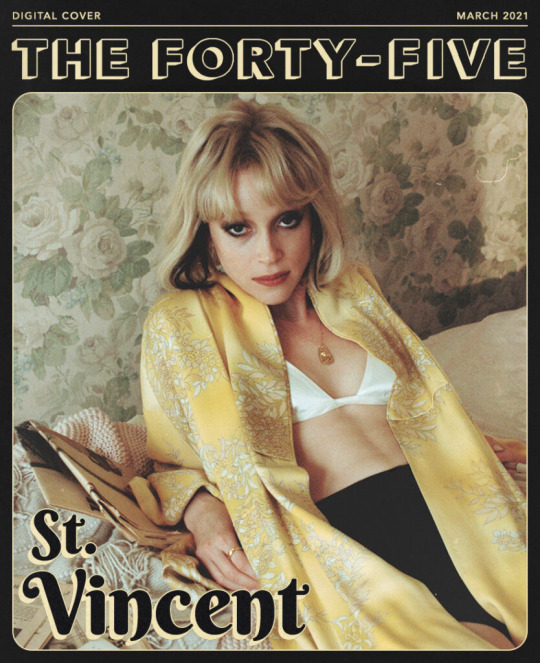
Four years later, Clark gets to own the narrative herself in the medium that’s most apt: music. “The story has evolved. I’ve evolved. People have grown up. I would rather be the one to tell my story,” she says, ruminating on the misfortune that this was robbed from her: a story that writes itself. “My father’s release from prison is a great starting point, right?” Between tours and whenever she could manage, Clark would go and visit him in prison and would be signing autographs in the visitation room for the inmates, who all followed her success with every album release, press clipping and late night TV spot. She joked to her sisters that she’d become the belle of the ball there. “I don’t have to make that up,” she says.
There’s an ease to Clark’s interview manner that hasn’t existed before. She seems ready not just to discuss her father’s story, but to own certain elements of herself. “Hell where can you run when the outlaw’s inside you,” she sings on the title track, alluding to her common traits with her father. “I’ve always had a relationship with my dad and a good one. We’re very similar,” she says. “The movies we like, the books, he liked fashion. He’s really funny, he’s a good time.” Her father’s release gave Clark and her brothers and sisters permission to joke. “The title, ‘Daddy’s Home’ makes me laugh. It sounds fucking pervy as hell. But it’s about a real father ten years later. I’m Daddy now!”

The question of who’s fathering who is a serious one, but it’s also not serious. Clark wears the idea of Daddy as a costume. She likes to play. She joins today’s Zoom in a pair of sunglasses wider than her face and a silk scarf framing her head. The sunglasses come off, and the scarf is a tool for distraction. She ties it above her forehead, attempts a neckerchief, eventually tosses it aside. Clark can only be earnest for so long before she seeks some mischief. She doesn’t like to stay in reality for extensive periods. “I like to create a world and then I get to live in it and be somebody new every two or three years,” she says. “Who wants to be themselves all the time?”
‘Daddy’s Home‘ began in New York at Electric Lady studios before COVID hit and was finished in her studio in LA. She worked on it with “my friend Jack” [Jack Antonoff, producer for Lana Del Rey, Lorde, Taylor Swift]. Antonoff and Clark worked on ‘Masseduction’ and found a winning formula, pushing Clark’s guitar-orientated electronic universe to its poppiest maximum, without compromising her idiosyncrasies. “We’re simpatico. He’s a dream,” she says. “He played the hell outta instruments on this record. He’s crushing it on drums, crushing it on Wurlitzer.” The pair let loose. They began with ‘The Holiday Party’, one of the warmest tracks Clark’s ever written. It’s as inviting as a winter fireplace, stoked by soulful horns, acoustic guitar and backing singers. “Every time they sang something I’d say, ‘Yeah but can you do it sleazier? Make your voice sound like you’ve been up for three days.” Clark speaks of an unspoken understanding with Antonoff as regards the vibe: “Familiar sounds. The opposite of my hands coming out of the speaker to choke you till you like it. This is not submission. Just inviting. I can tell a story in a different way.”
The entire record is familiar, giving the listener the satisfaction that they’ve heard the songs before but can’t quite place them. It’s a satisfying accompaniment to a pandemic that encouraged nostalgic listening. Clark was nostalgic too. She reverted to records she enjoyed with her father: Stevie Wonder’s catalogue from the 1970s (‘Songs In The Key Of Life’, ‘Innervisions’, ‘Talking Book’) and Steely Dan. “Not to be the dude at the record store but it’s specifically post-flower child idealism of the ’60s,” she explains. “It’s when it flipped into nihilism, which I much prefer. Pre disco, pre punk. That music is in me in a deep way. It’s in my ears.”

On ‘The Melting Of The Sun’ she has a delicious time creating a psychedelic Pink Floyd odyssey while exploring the path tread by her heroes Marilyn Monroe, Joni Mitchell, Joan Didion and Nina Simone. It’s a series of beautiful vignettes of brilliant women who were met with a hostile environment. Clark considers what they did to overcome that. “I’m thanking all these women for making it easier for me to do it. I hope I didn’t totally let them down.” Clark is often the only woman sharing a stage with rock luminaries such as Dave Grohl, Damon Albarn and David Byrne, and has appeared to have shattered a male-centric glass ceiling. She’s unsure she’s doing enough to redress the imbalance. “There are little things I can do and control,” she says of hiring women on her team. “God! Now I feel like I should do more. What should I do? It’s a big question. You know what I have seen a lot more from when I started to now? Girls playing guitar.”
If one woman reinvented the guitar in the past decade, it’s Clark. Behind her is a rack of them. The pandemic has taken her out of the wild in which she’s accustomed to tantalising audiences at night with her displays of riffing and heel-balancing. Instead, she’s chained to her desk. Her obsession with heels in the lyrics of ‘Daddy’s Home’ she reckons may be a reflection of her nights performing ‘Masseduction’ in thigh highs. “I made sure that nothing I wore was comfortable,” she recalls. “Everything was about stricture and structure and latex. I had to train all the time to make sure I could handle it.” Is she taking the heels off when live shows return? “Absofuckinglutely not.”

Clark is interested in the new generation. She’s recently tweeted about Arlo Parks and has become a big fan of Russian singer-songwriter Kate NV. “I’m obsessed with Russia,” she says. In a recent LA Times profile, she professed to a pandemic intellectual fixation on Stalin. “Yeah! I mean right now my computer is propped up on stuff. You are sitting on The Gulag Archipelago, The Best Short Stories Of Dostoyevsky andThe Plays Of Chekhov. I’m kinda in it.” The pop world interests Clark, too. She was credited with a co-write on Swift’s 2019 album ‘Lover’. At last year’s Grammys she performed a duet with Dua Lipa. It was one of the queerest performances the Grammys has ever aired. Clark interrupts.
“What about it seemed queer?!”
You know… The lip bite, for one!
“Wait. Did she bite her lip?”
No, you bit your lip.
“I did?!”
Everyone was talking about it. Come on, Annie.
“Serious? I…”
You both waltzed around each other with matching hairdos, making eyes…
“I have no memory of it.”
Frustrating as it may be in a world of too much information, Clark’s lack of willingness to overanalyse every creative decision she makes or participates in is something to treasure. “I want to be a writer who can write great songs,” she says. “I’m so glad I can play guitar and fuck around in the studio to my heart’s desire but it’s about what you can say. What’s a great song? What lyric is gonna rip your guts open. Just make great shit! That’s where I was with this record. That’s all I wanna do with my life.”
More than a decade into St. Vincent, Clark doesn’t reflect. She looks strictly forward. “I’m like a horse with blinders,” she says. She did make an exception to take stock lately when the phone rang. “I saw a +44 and that gets me excited,” she says. “Who could this be?” Well, who was it? “Paul McCartney,” she says, in disbelief. “Anything I’ve done, any mistake I’ve made, somehow it’s forgiven, assuaged. I did something right in my life if a fucking Beatle called me.”
Now there’s a get out of jail free card if ever she needed one.
Daddy’s Home by St. Vincent is out May 14, 2021.
68 notes
·
View notes
Text
https://www.rollingstone.com/music/music-features/st-vincent-daddys-home-interview-1136037/
4 notes
·
View notes
Video
vimeo
ANNIE CLARK IS SINGING ONE OF MY FAVORITE SONGS SET TO VIOLINS
I AM SQUEELING LIKE AN EXCITED SCHOOLGIRL RIGHT NOW
145 notes
·
View notes




